
When the pioneers swept westward in the U.S. in the 1800s, they needed raw material for their homesteads and daily lives–we forget that there were no plastics in those days. Big business of course followed and commercial logging followed the ever moving pioneer front.
The fast growing town of San Francisco and other rapidly expanding cities in the east were huge consumers of timber, from houses to the humble packing crate.
In America, logging can be traced back to the 17th century. As the number of settlers grew, timber was constantly in demand too. By the mid 19th century, Bangor in Maine outperformed the rest of the world with its timber exports. This was around the time America also got its very first paper mill in Pennsylvania–timber was BIG business.
Logging was preferable in areas close to water. This was easier for transferring the resources. Manual logging and the lumber industry flourished particularly well after the Homestead Act law as of 1862.
This act invited families in the West to claim vast acres as their own land. The lands frequently needed clearing from thick dense forests as most people opted to turn their new properties into land for farming.
As the forests were cleared from the areas close to rivers and water ways there was a need to build log flumes to transfer the lumber over more mountainous terrains and to rivers. These were an engineering feat in their own right.
As technology evolved after the industrial revolution in the 19th century so did the rate of the felling of big woods. Railways started to make there way right into the heartlands of the forests. The timber industry soon became the top manufacturing industry in the West and there were many timber ‘barons.’
By the early 20th century, the biggest number of lumberjacks was concentrated in Washington state. Not surprising as the Pacific Northwest is the home to some of the most prominent and biggest trees in the world, the giant ancient sequoia. Logging has cleared vast areas of these precious woods over time.
Sadly, by the time Redwood National Park was formed in the late 60s, as much as 90 percent of the redwood trees had been felled. Below is a collection of a time gone by………..

Riding the Broughton lumber flume boat. The Broughton lumber flume dominated the hillside between the towns of Willard and Hood in the State of Washington for over seventy years.
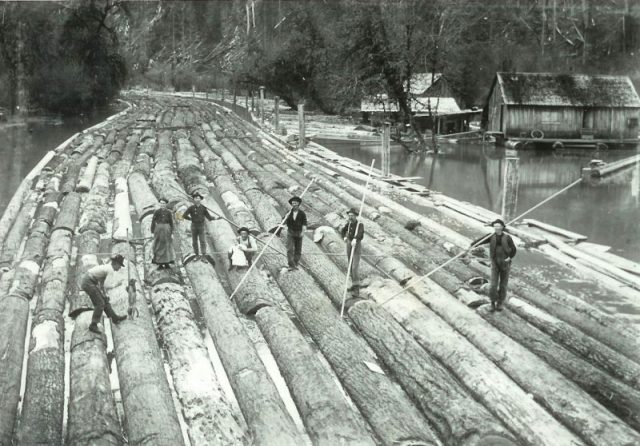
Lumberjacks pose on a timber raft in Washington.
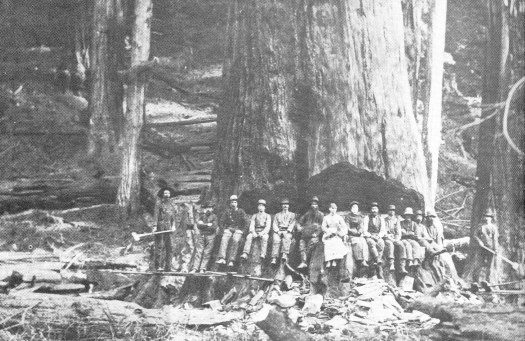
Brawn and axes felled these mighty giants
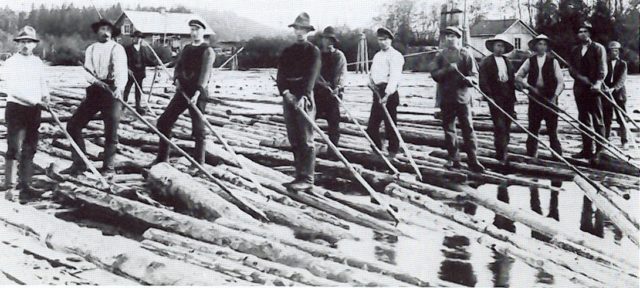
Log rafting – the way to move thousands of tons of timber down to the mills
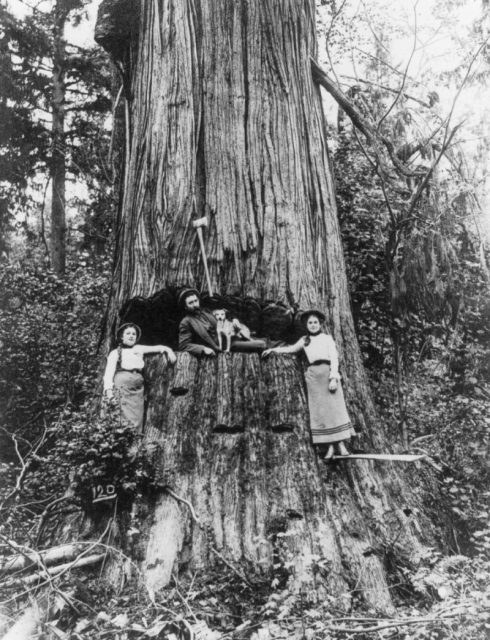
A lumberjack and two women pose in front of a tree near Seattle, Washington.
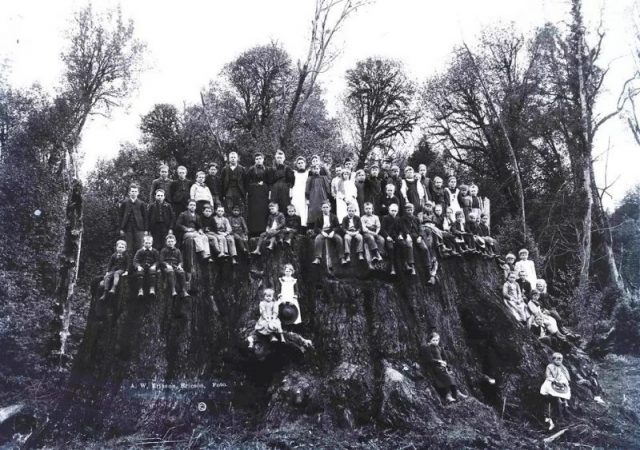
The Fieldbrook Stump, in California, not long after it was felled in 1890. Cuttings from it have been cultivated at the Eden Project (Ericson Collection, Humboldt State University Library )
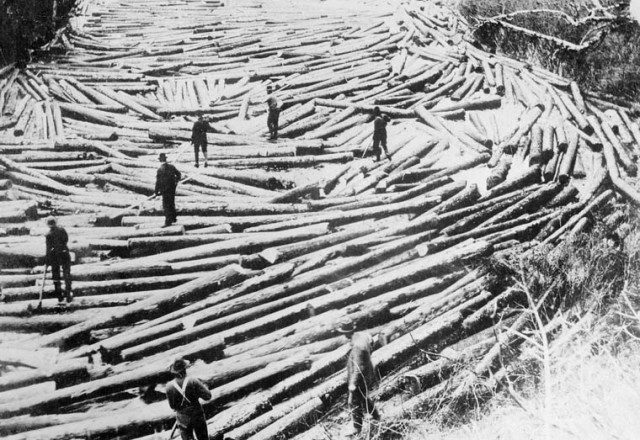
A cheap and efficient way to move the timber, but it was a highly dangerous job.
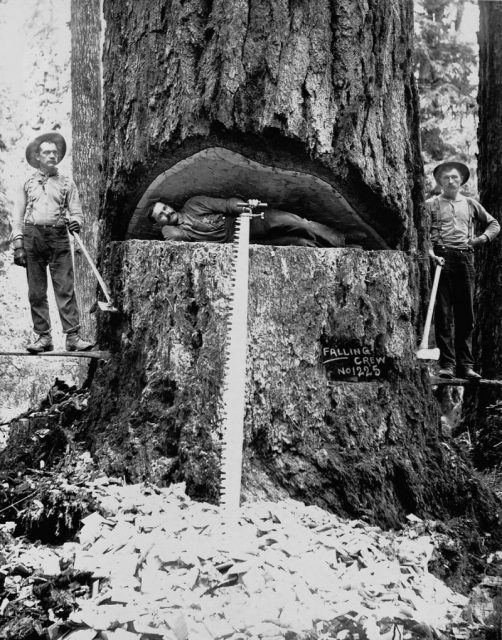
Lumberjacks pose with a Douglas fir tree in Washington.
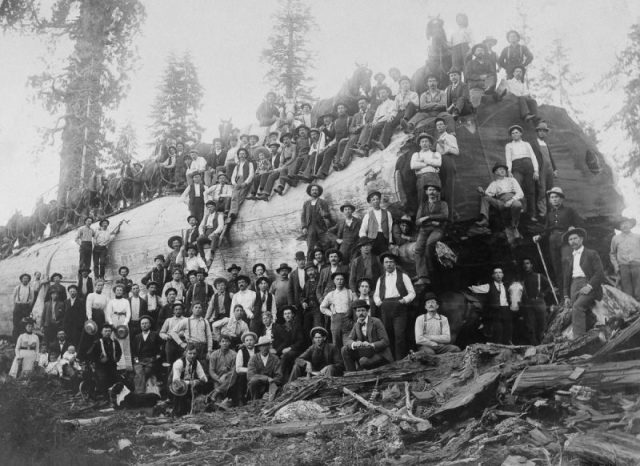
1917. Over 100 people stand with a felled giant sequoia tree in California.
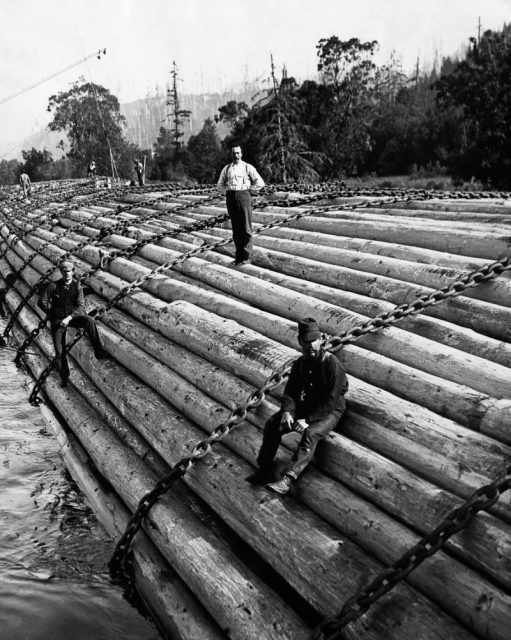
Lumberjacks float lumber down the Columbia River in Oregon.
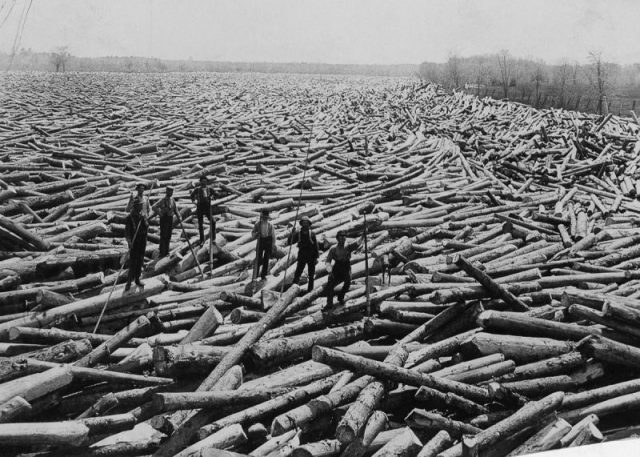
It’s hard to believe that there’s water underneath the thousands of logs. New York, 1907.
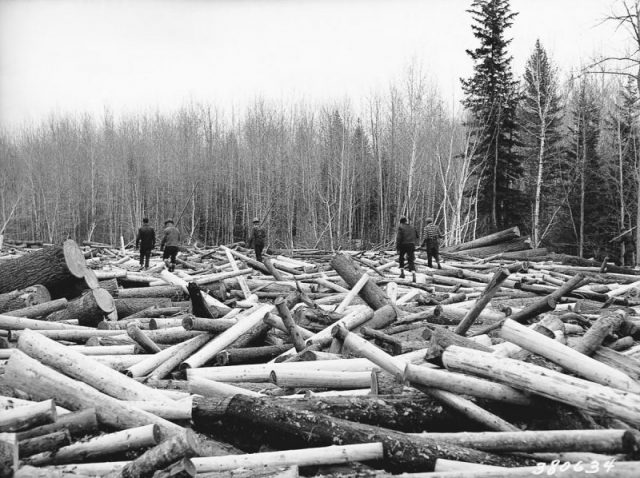
Loggers walk the surface of a log jam on Minnesota’s Littlefork River.
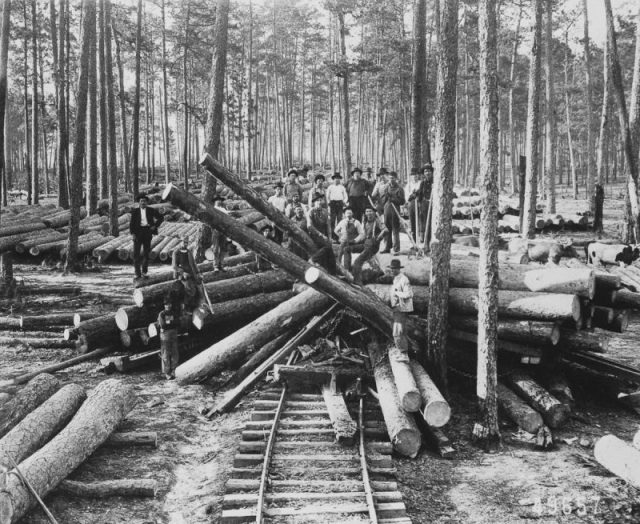
A logging crew stands among cut old growth longleaf pine in Vernon Parish, Louisiana.
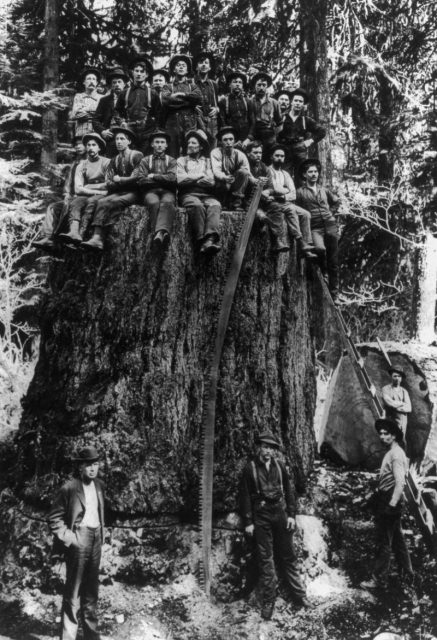
Lumberjacks pose on the stump of a tree which was displayed at St. Louis World’s Fair. Photographed in 1904.
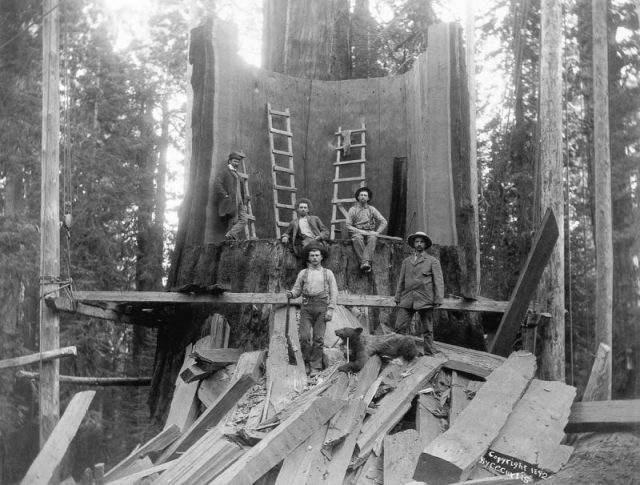
Loggers stand in the trunk of a tree they chopped down at Camp Badger in Tulare County, California. The tree was logged for the World’s Columbian Exposition in Chicago.
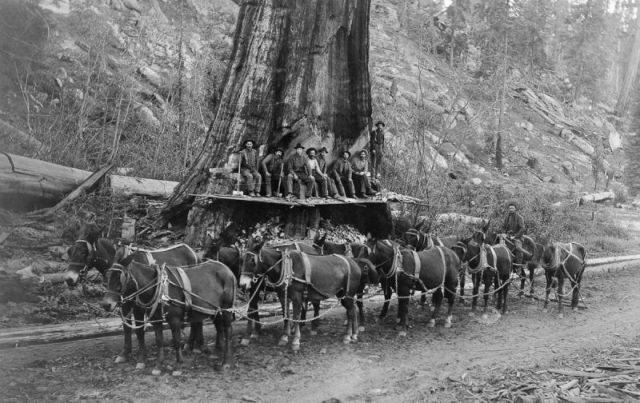
Loggers and a 10-mule team prepare to fell a giant Sequoia tree in California.
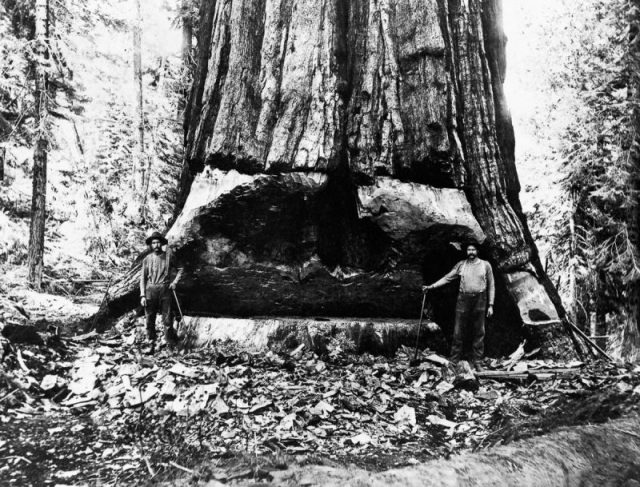
Lumberjacks undercut a giant sequoia tree in California.
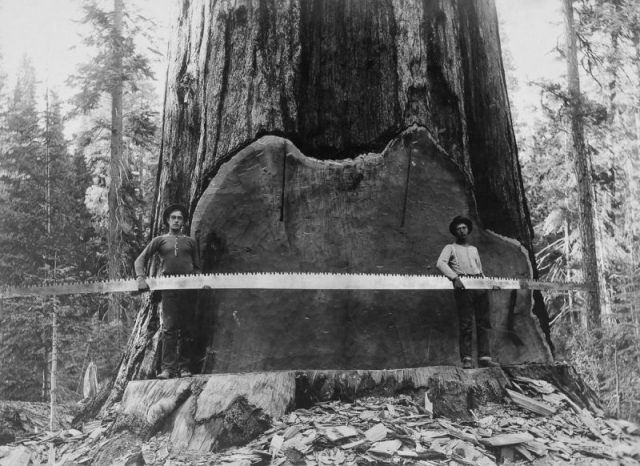
Loggers hold a cross-cut saw across a giant Sequoia tree’s trunk in California.
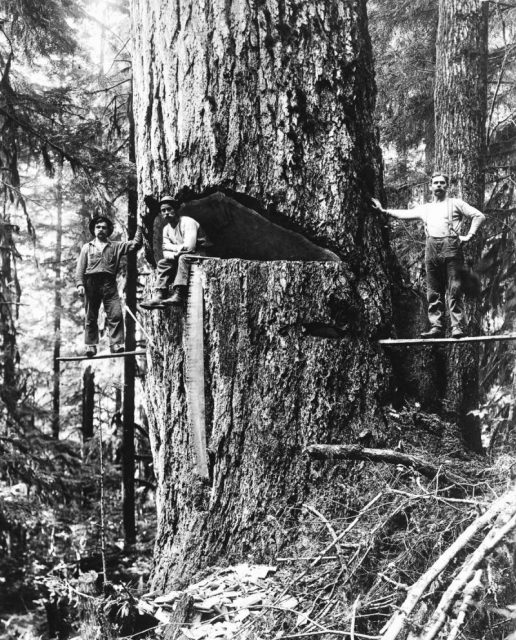
Three lumberjacks pose by a large Douglas fir ready for felling in Oregon.
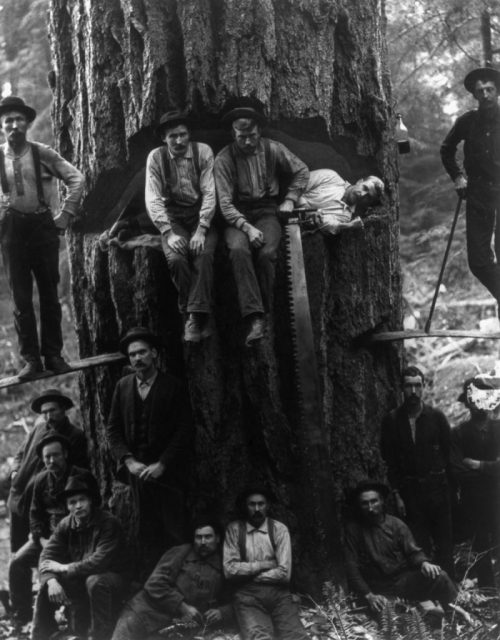
A ‘small’ tree in comparison – note the whisky bottle…
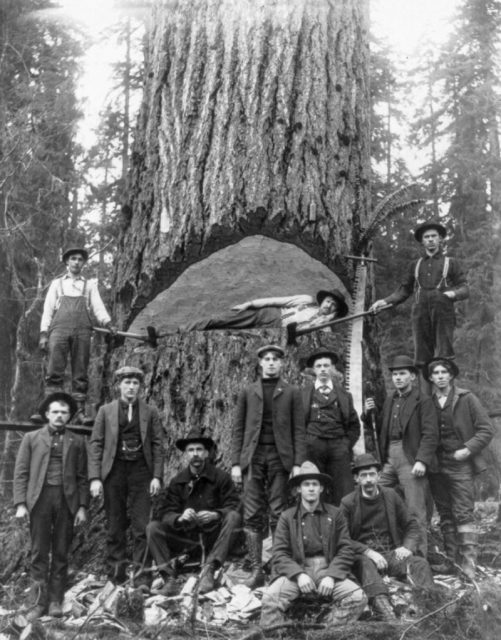
Lumberjacks pose with a 12-foot-wide fir tree.
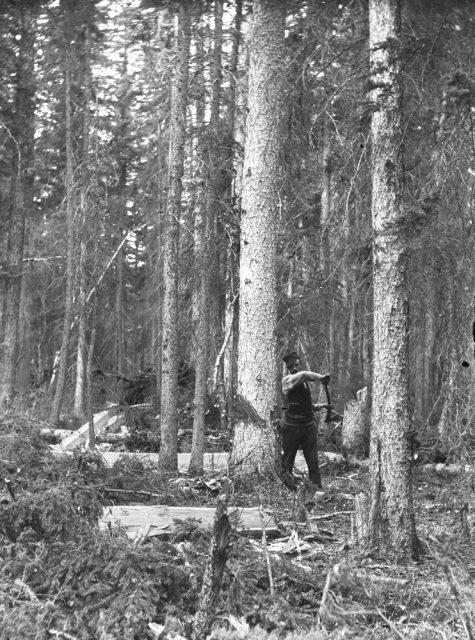
Unidentified man (possibly Robert Brebner) clearing trees from the Brebner homestead, c. 1900. Spruce Grove, Alberta. From the Robert McKay Brebner fonds.
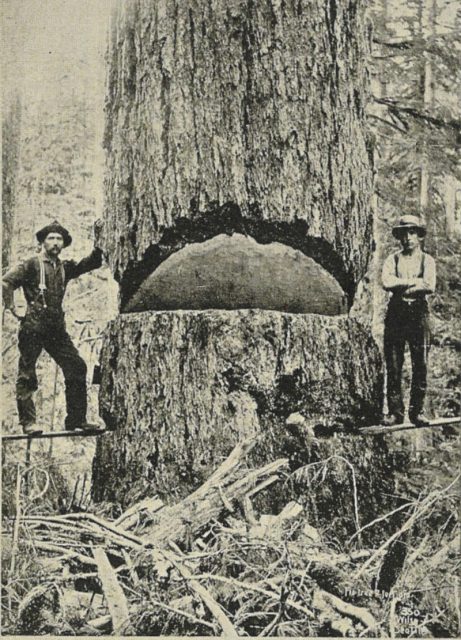
9-foot diameter Douglas fir, 1900.
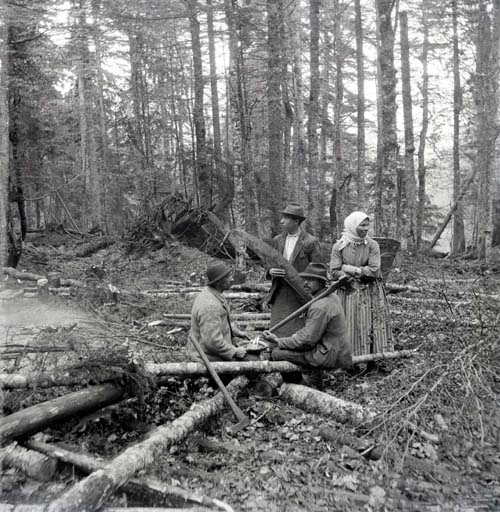
Woodcutters (Bohemian Forest)
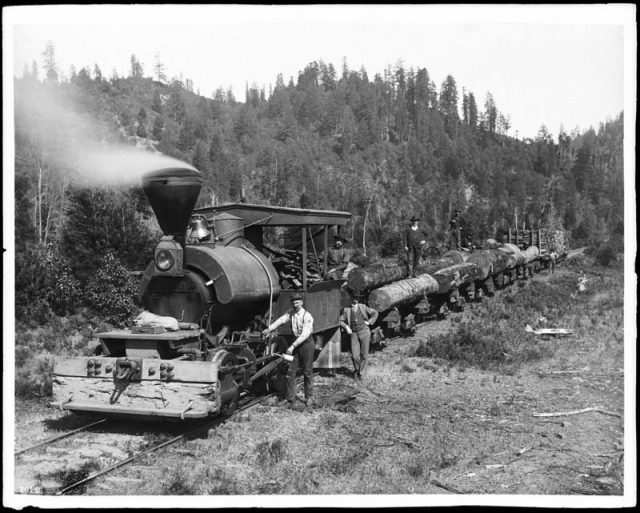
Logging train loaded with logs, c.1900.
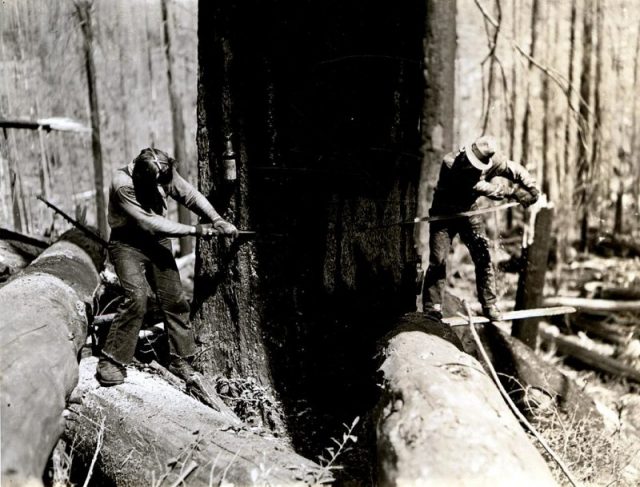
Fallers cutting fire-killed Douglas-fir. Bonlokke operation.
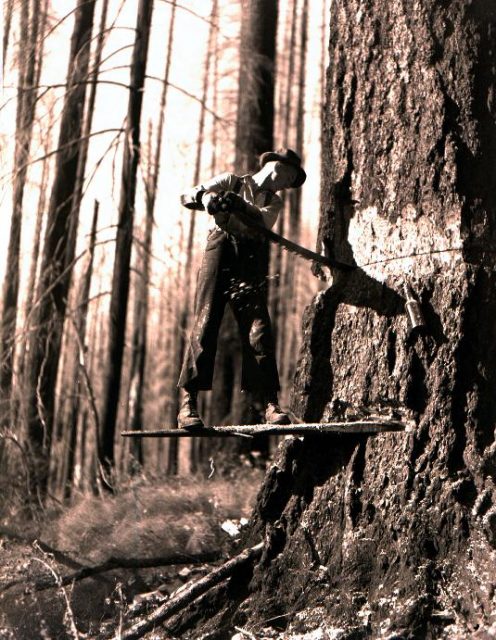
Faller working on a burned tree
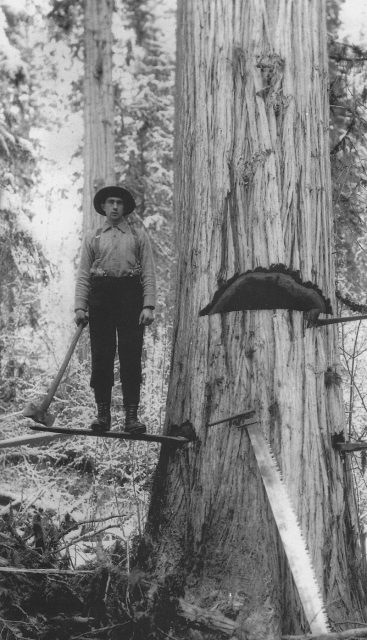
Bob Balmer hand falls a cedar tree twenty miles north of Adams Lake on the Adams River
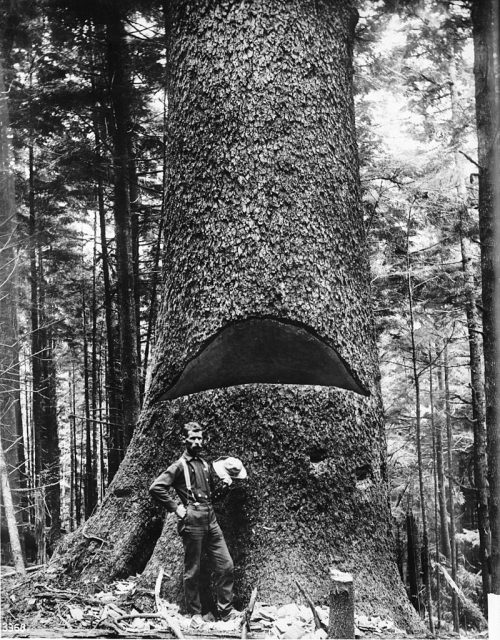
A lumberjack standing at the base of a huge tree showing a cut in the tree, c.1900.
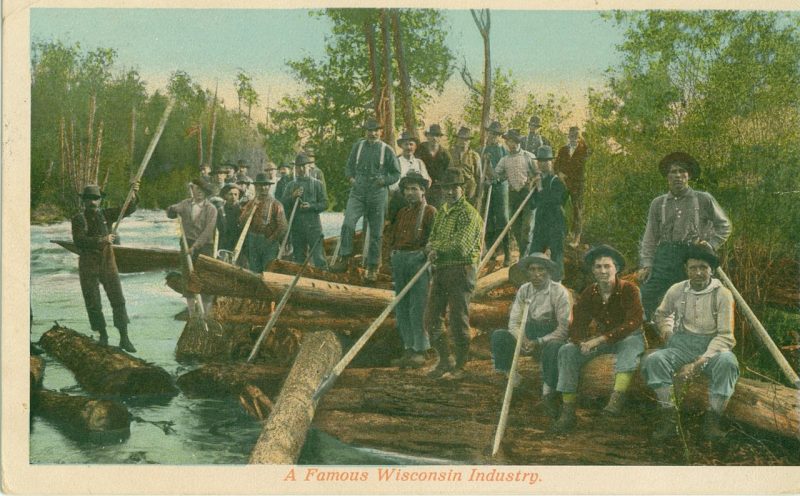
A group of Wisconsin lumberjacks pose on the side of a river, 1915.
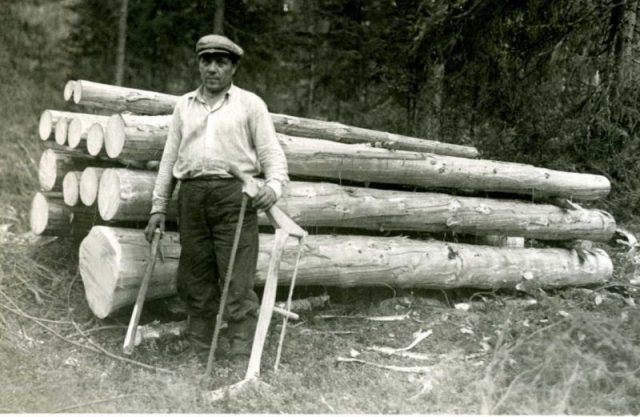
Finnish lumberjack of Yhtyneet Paperitehtaa in 1944.
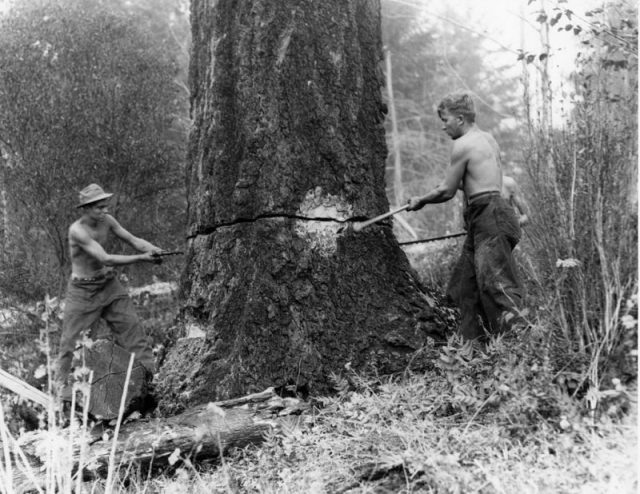
Felling snags on fire line around the Coquille CCC camp.
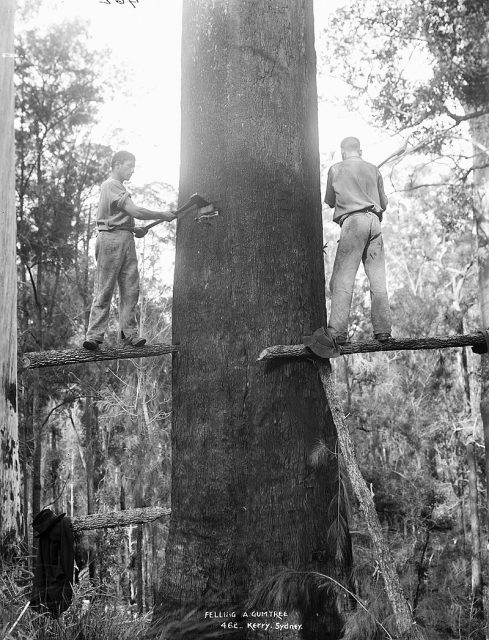
Felling a gumtree c.1884-1917.
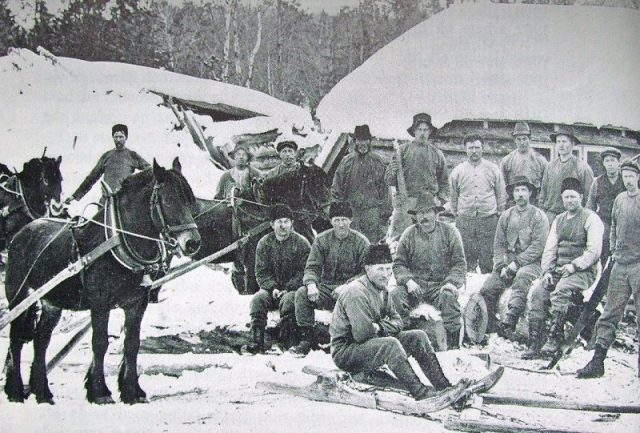
Picture of lumberjacks in Dödre in Jämtland, Sweden.
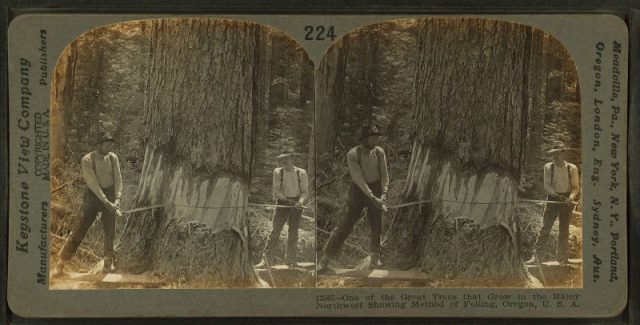
One of the great trees that grow in the rainy northwest, showing method of felling. Oregon, U.S.A, by Keystone View Company.
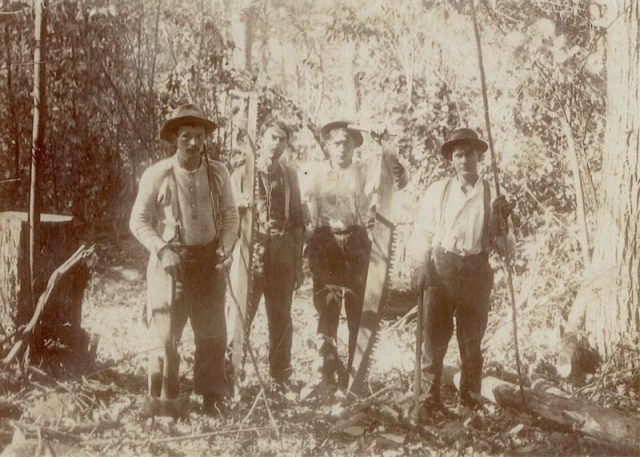
Old photograph of lumberjacks.
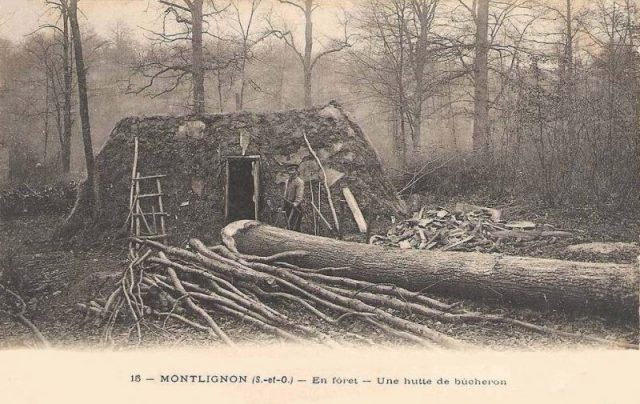
Lumberjack with his tree-stump home.
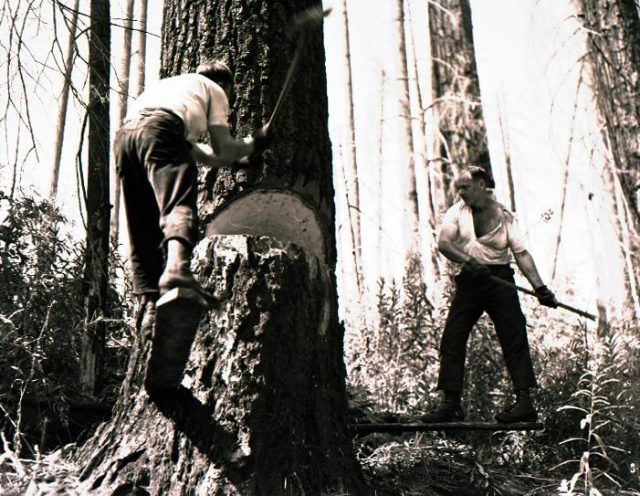
Fallers undercutting fire-killed Douglas fir, 1938.
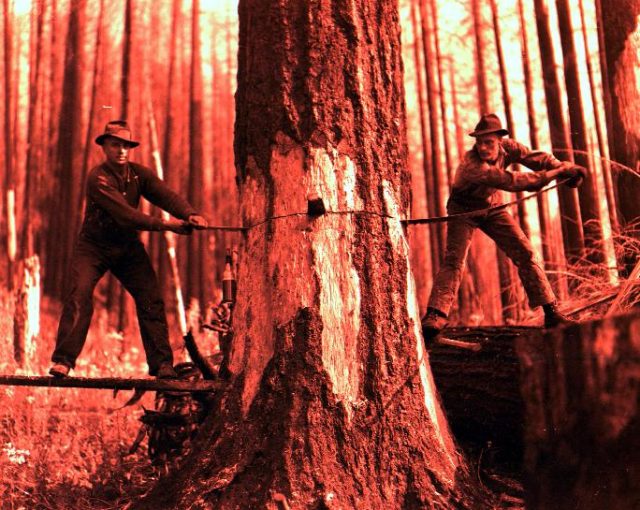
Fallers working on a burned tree. Rhyne operation, Tillamook Burn, Oregon.
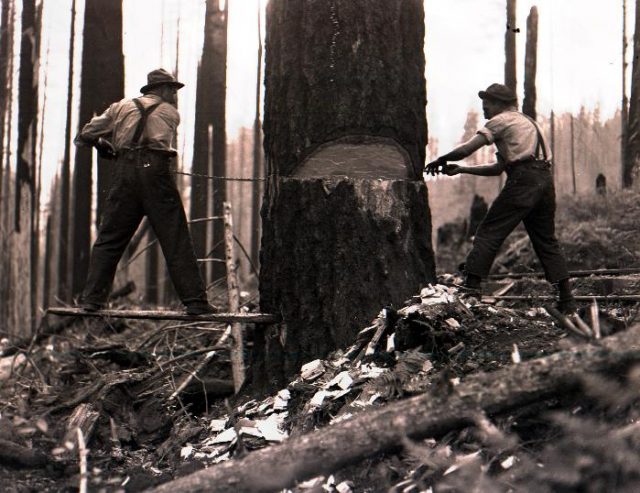
Fallers on the Anliker area of the Tillamook Burn, Oregon.
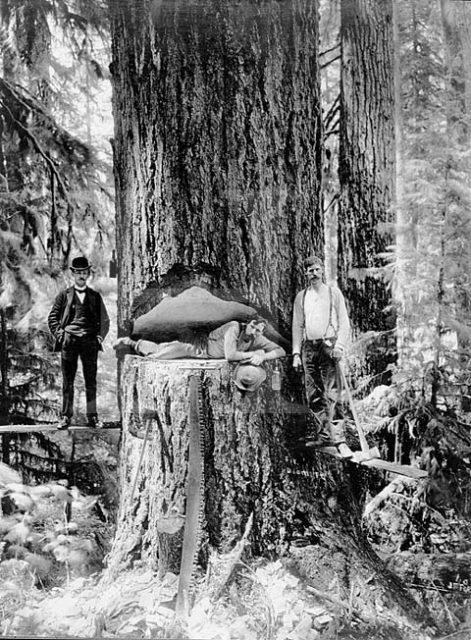
Lumbering, 1905-1910.
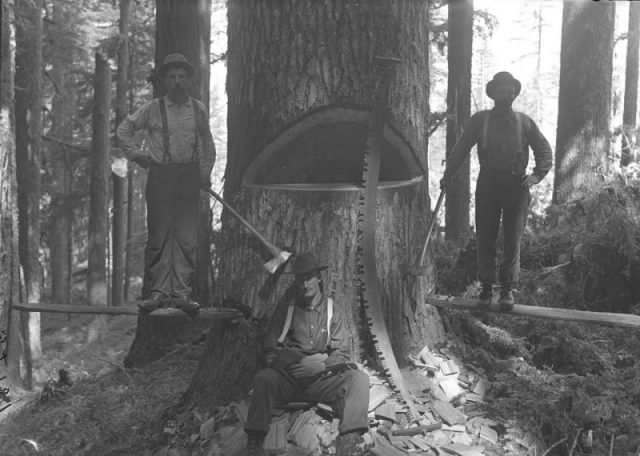
Three men taking a breather after undercutting the tree, 1910.
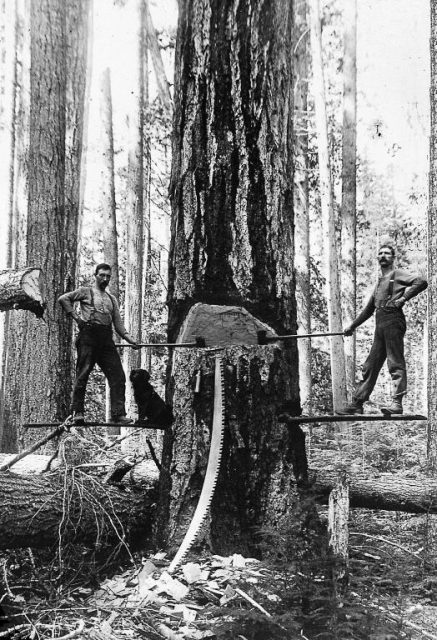
Two men chopping down a large tree, 1895.
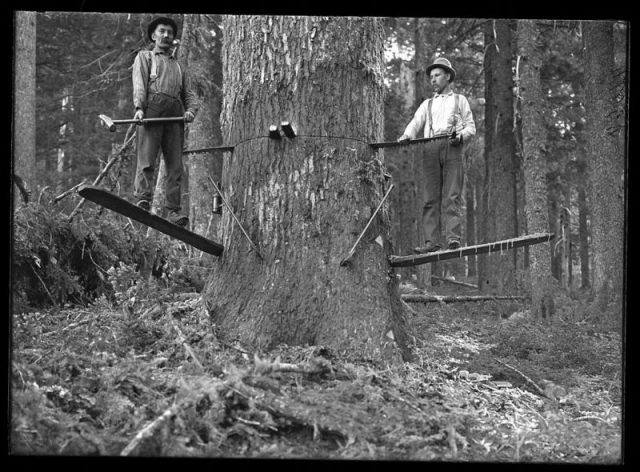
Two men sawing a larch tree, 1910.
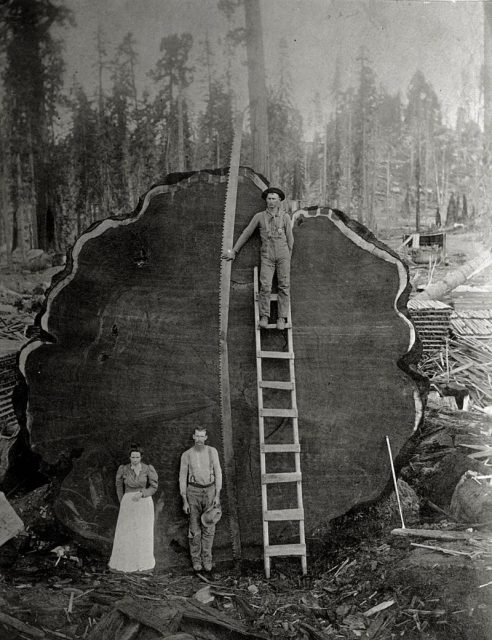
Loggers and the giant Mark Twain redwood cut down in California.
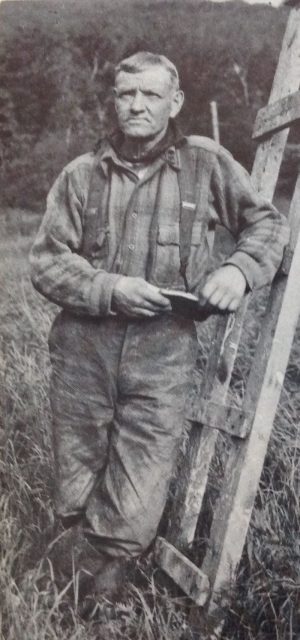
Jigger Johnson at Peabody River, Gorham, NH, 1922.
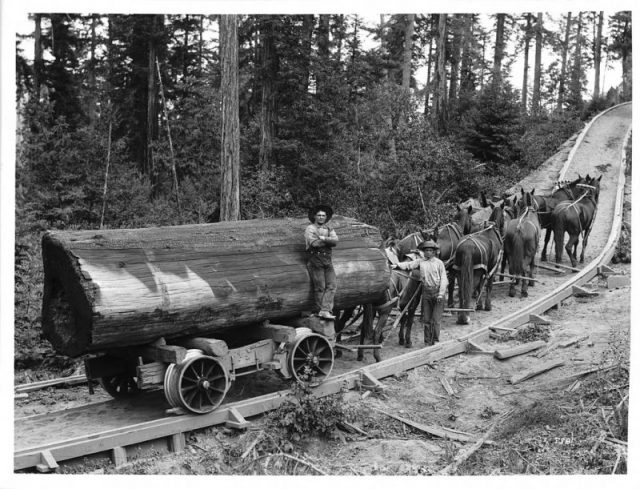
Logging railway with a wagon being pulled by 8 horses, c.1902.
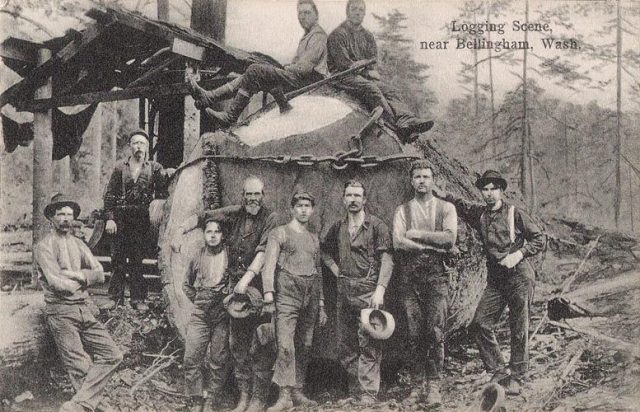
Logging scene, near Bellingham, WA, from a c.1910. Postcard published by Sprouse & Son, Importers & Publishers, Tacoma, Washington.
These enormous trees can live to 2,000 years old and have been on the planet for around 240 million years. Although they were once thriving throughout much of the Northern Hemisphere, today redwoods can be only found located on the coast of central California through to southern Oregon.
They don’t live more than 50 miles inland, and are commonly seen in long belts instead of small groves.
